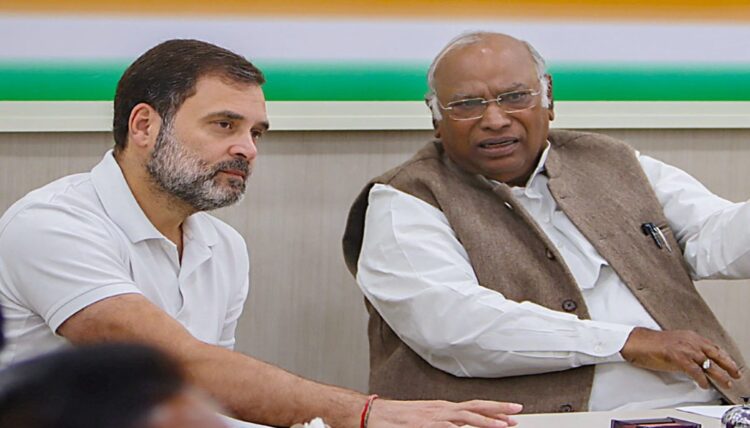Patna: As exit polls for the 2025 Bihar Assembly elections indicate a strong comeback for the NDA and a clear decline for the Grand Alliance, a significant question arises for Congress: what impact did Rahul Gandhi’s campaign truly have? Exit poll data from agencies like Chanakya Strategy, IANS–Matrix, and People’s Pulse consistently reveal that, despite a noticeable campaign presence spearheaded by Rahul Gandhi, the Congress has not managed to convert enthusiasm into votes. The party is anticipated to secure between 17 and 23 seats, similar to its 2020 performance, implying that Rahul’s rallies and messages may not have resonated with the voters of Bihar.
A Campaign High on Optics, Low on Conversion During the campaign, Rahul Gandhi emphasized issues such as vote theft, employment, education, and social justice, while criticizing Prime Minister Narendra Modi and Chief Minister Nitish Kumar over governance and corruption. His speeches were emotional, combative, and filled with personal appeals, attracting large crowds, especially in Seemanchal, Mithila, and Bhagalpur. However, as suggested by the exit polls, this turnout may not have translated into actual votes. Political analyst Sanjay Kumar remarked, “Rahul Gandhi’s rallies draw attention but rarely change Bihar’s caste dynamics.
The Congress remains reliant on RJD’s support rather than being a standalone force.” The Congress Conundrum in Bihar Over the past two decades, Congress’s traditional base in Bihar, comprising upper castes and minorities, has steadily diminished. While the RJD continues to dominate the backward caste and Muslim votes, Congress’s absence of a strong local organization has left it marginalized in state politics. Rahul Gandhi’s appeal to younger voters and women, often framed around his “Nyay” (justice) narrative, did not seem to penetrate Bihar’s deeply rooted social divisions. In districts such as Kishanganj, Katihar, and Bhagalpur, where he campaigned vigorously, exit polls indicate slight shifts but no fundamental change in voting behavior.
What the Exit Polls Indicate According to Chanakya Strategy, the NDA is projected to win 130–138 seats, while the Grand Alliance may achieve 100–108. Within this alliance, Congress is expected to secure 17–23 seats, reflecting its previous performance. The People’s Pulse exit poll presents a similar scenario — Congress’s limited impact despite Rahul Gandhi’s vigorous campaign. The results suggest that Congress’s function in Bihar remains more symbolic than strategic, serving as an electoral ally rather than a political leader. Whether Rahul Gandhi’s “shop of love” in the “market of hatred,” as he describes it, can eventually rejuvenate the party’s grassroots in Bihar remains unclear. For now, exit polls indicate that Bihar’s voters have once again opted for stability over symbolism.
